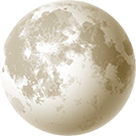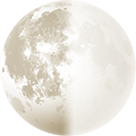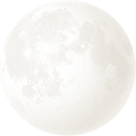What to see in the Night Sky in August 2022What to see in the night sky during August including Moon phases, supermoon, planet guide, the Perseid meteor shower and deeps space objects M56 and M57.
August Moon Phases
August's full moon was known by early Native American tribes as the Sturgeon Moon because the large sturgeon fish of the Great Lakes and other major lakes were more easily caught at this time of year. This moon has also been known as the Green Corn Moon and the Grain Moon.
Full Moon and New Moon for August 2022

August 2022 First QuarterThu 1st Jan

August 2022 Full MoonFri 12th Aug

August 2022 Last QuarterFri 19th Aug

August 2022 New MoonSat 27th Aug
Notable Events in August
August 12 is the last of three supermoons for 2022. The Moon will be near its closest approach to the Earth and may look slightly larger and brighter than usual.
August Planets
Mars, Venus and Jupiter are all bright morning planets.
Saturn reaches opposition on August 14th which means that it is directly opposite the sun, making it its brightest and best viewing for the year. Saturn will be visible the entire night, rising at sunset and setting and sunrise.
August Meteor Showers
The Perseids is one of the best meteor showers to observe, producing up to 60 meteors per hour at its peak. It is produced by the comet Swift-Tuttle, which was discovered in 1862. The Perseids are famous for producing a large number of bright meteors. The shower runs annually from July 17 to August 24. It peaks this year on the night of August 12 and the morning of August 13. Unfortunately, the nearly full moon this year will block out all but the brightest meteors. But the Perseids are so bright and numerous that it could still be a decent show. The best viewing will be from a dark location after midnight. Meteors will radiate from the constellation Perseus, but can appear anywhere in the sky.

August Deep Space Objects
Last month we looked at M92 and M13 in Hercules, this month we look at two in Lyra, often overlooked due to their proximity to Hercules. M56 is a globular cluster in Lyra and M57 is a planetary nebula.

Messier 56 is relatively easy to find because it lies roughly halfway along the line from Albireo (Beta Cygni) to Sulafat (Gamma Lyrae). The cluster can be a challenge in binoculars because it is quite dim and does not have a bright core. In large binoculars, it appears as a fuzzy patch or an out-of-focus star. To resolve it into individual stars, you need an 8-inch or larger telescope.
M57 is the Ring Nebula, a planetary nebula located in Lyra. The nebula cannot be resolved in small binoculars and is best seen in 8-inch and larger telescopes. Even smaller telescopes will reveal the nebula's ring shape, while medium-sized instruments will also show its interior hole.









